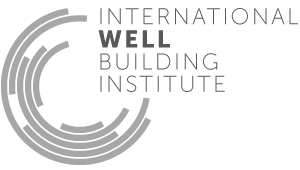VOC reduction
- 1 Air quality standards
- 2 Smoking ban
- 3 Ventilation effectiveness
- 4 VOC reduction
- 5 Air filtration
- 6 Microbe and mold control
- 7 Construction pollution management
- 8 Healthy entrance
- 9 Cleaning protocol
- 10 Pesticide management
- 11 Fundamental material safety
- 12 Moisture management
- 13 Air flush
- 14 Air infiltration management
- 15 Increased ventilation
- 16 Humidity control
- 17 Direct source ventilation
- 18 Air quality monitoring and feedback
- 19 Operable windows
- 20 Outdoor air systems
- 21 Displacement ventilation
- 22 Pest control
- 23 Advanced air purification
- 24 Combustion minimization
- 25 Toxic material reduction
- 26 Enhanced material safety
- 27 Antimicrobial surfaces
- 28 Cleanable environment
- 208 Injury prevention
04. VOC reduction
Indoor air quality is often degraded by volatile organic compounds (VOCs) that off-gas from paints, finishes and other coatings. Levels of VOCs can be 5 times higher indoors than outdoors. At high concentrations, these gases are known to cause irritation, nausea and loss of coordination.
This feature requires that building finishes be carefully selected to allow spaces to meet the WELL Air Quality Standards feature. While not specifically addressed in this feature, note that objects or furniture made with harmful materials may cause buildup of VOCs if brought indoors after building completion.
To prevent pollutants from entering the ventilation system, all ducts are either:
The VOC content of all newly applied adhesives and sealants must meet all limits set by the following, as applicable:
The VOC content of all newly installed flooring must meet all limits set by the following, as applicable:
The VOC content of all newly installed thermal and acoustic insulation installed in ceilings and walls must meet all limits set by the following:
The VOC content of at least 95% (by cost) of all newly purchased furniture and furnishings must meet all limits set by the following, as applicable:

Applicability Matrix
| Core & Shell | Tenant Improvement | New Construction | |
|---|---|---|---|
| Part 1: Duct Protection | P | P | P |
| Part 2: Interior Adhesives and Sealants | P | P | P |
| Part 3: Flooring | P | P | P |
| Part 4: Insulation | P | P | P |
| Part 5: Furniture and Furnishings | - | P | P |
| Commercial Kitchen | Schools | Multifamily Residential | Restaurant | Retail | |
|---|---|---|---|---|---|
| Part 1: Duct Protection | P | P | P | P | P |
| Part 2: Interior Adhesives and Sealants | P | P | P | P | P |
| Part 3: Flooring | P | P | P | P | P |
| Part 4: Insulation | P | P | P | P | P |
| Part 5: Furniture and Furnishings | P | P | P | P | P |
Verification Methods Matrix
| Letters of Assurance | Annotated Documents | On-Site Checks | |
|---|---|---|---|
|
PART 1 (Protocol) Duct Protection |
Contractor | ||
|
PART 2 (Design) Interior Adhesives and Sealants |
Architect | ||
|
PART 3 (Design) Flooring |
Architect | ||
|
PART 4 (Design) Insulation |
Architect | ||
|
PART 5 (Design) Furniture and Furnishings |
Architect |
| 4.1.a |
Adherence to CARB SCM for Architectural Coatings or SCAQMD Rule 1113 satisfies the requirements for VOC content but not the emissions requirement of USGBC's LEED v4 EQ Credit: Low-Emitting Materials for wet-applied products. |
| 4.1.b |
USGBC's LEED v4 EQ Credit: Low-Emitting Materials requires that 90%, by volume, for emissions of paints and coatings applied to walls, floors and ceilings are tested and determined compliant with CDPH Standard Method v1.1-2010. |
| 4.1.c |
USGBC's LEED v4 EQ Credit: Low Emitting Materials suggests projects outside the U.S. meet applicable national VOC control regulations or conduct testing of VOC content in accordance with ASTM D2369-10; ISO 11890, part 1; ASTM D6886-03; or ISO 11890-2. |
| 4.2.a |
USGBC's LEED v4 EQ Credit: Low-Emitting Materials requires that adhesives and sealants wet-applied on site meet the applicable VOC limits of the SCAQMD Rule 1168, in addition to emissions requirements. |
| 4.2.b |
USGBC's LEED v4 EQ Credit: Low-Emitting Materials requires that 90% of interior adhesives and sealants, for emissions, applied on site are tested and determined compliant with CDPH Standard Method v1.1-2010. |
| 4.2.c |
USGBC's LEED v4 EQ Credit: Low Emitting Materials suggests projects outside the U.S. meet applicable national VOC control regulations or conduct testing of VOC content in accordance with ASTM D2369-10; ISO 11890, part 1; ASTM D6886-03; or ISO 11890-2. |
| 4.3.a |
USGBC's LEED v4 EQ Credit: Low-Emitting Materials requires flooring ofollow the test method and meet the emissions criteria of CDPH Standard Method v1.1-2010. |
| 4.4.a |
USGBC's LEED v4 EQ Credit: Low-Emitting Materials requires insulation follow the test method and meet the emissions criteria of CDPH Standard Method v1.1-2010. |
| 4.5.a |
USGBC's LEED v4 EQ Credit: Low-Emitting Materials requires furniture and furnishings to comply with ANSI/BIFMA e3-2011 Furniture Sustainability Standard sections 7.6.1 and 7.6.2, and be tested in accordance with ANSI/BIFMA Standard Method M7.1-2011. |
